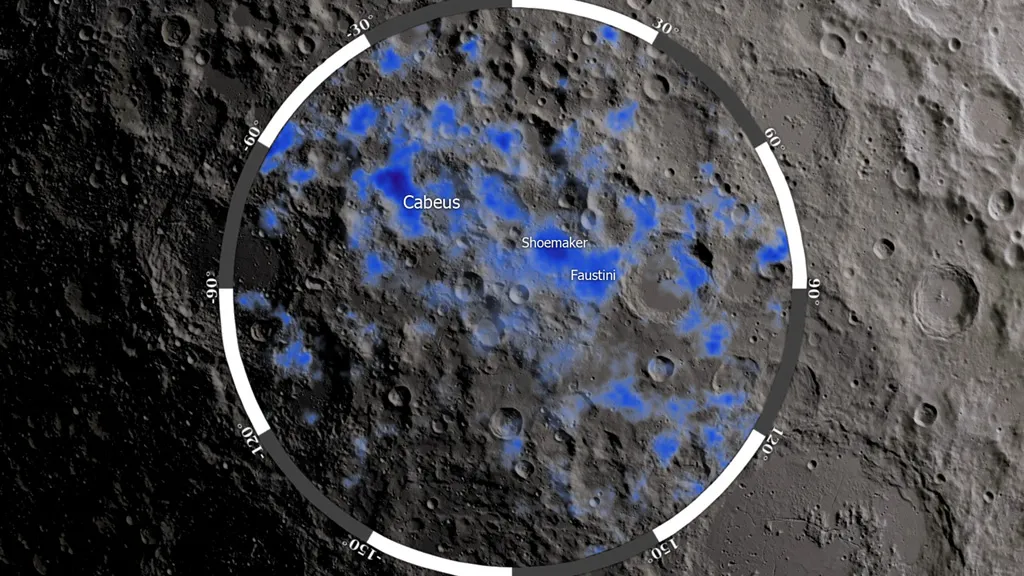Powerful wind from the Sun delivers the ingredients for water to form on the Moon, according to a study by a team of NASA-led scientists.
The study says chemical reactions triggered by solar wind hitting the lunar surface can produce water, with huge implications for future crewed missions to the Moon.

Solar wind explained
The influence of the Sun is felt across the Solar System in the form of a stream of charged particles known as the solar wind.
One example of the effect of the solar wind is the generation of aurorae on Earth, when these charged particles hit our planet's atmosphere.
The solar wind is made largely of protons that travel through space at over one million miles per hour.
Scientists have long suspected that the solar wind could deliver ingredients to form water on the Moon.
How the solar wind makes water
The theory goes that the solar wind hits the surface of the Moon and triggers a chemical reaction that produces water molecules.
Earth has an atmosphere and a magnetic field that shields us from most of the effects of solar wind.
But the Moon has no such protection and, using computer simulations, scientists have been able to show that protons from the Sun may the lunar surface, which is made of dusty, rocky regolith, and combine with electrons to form hydrogen atoms.
These hydrogen atoms can then migrate through the lunar surface and bond with oxygen atoms present in minerals like silica to form hydroxyl (OH) molecules – a component of water – and water (H2O) molecules themselves.

Testing the theory
A study published in JGR Planets has confirmed this prediction, say scientists, and could have implications for future Artemis missions to the Moon, which are due to land at the Moon's South Pole.
Here, much of the water is thought to be frozen in shadowed regions.
Water will be a vital resource for future astronauts on the Moon: not just for drinking, but also for producing rocket fuel and even oxygen.
"The exciting thing here is that with only lunar soil and a basic ingredient from the Sun, which is always spitting out hydrogen, there’s a possibility of creating water," says Li Hsia Yeo, a research scientist at NASA’s Goddard Space Flight Center, who led the study.
"That’s incredible to think about."

Finding proof
There is evidence that both hydroxyl and water molecules exist just a few millimetres below the Moon’s upper surface.
These molecules leave a chemical fingerprint that can be detected because of the way sunlight interacts with the regolith.
However, it's difficult to tell the difference between hydroxyl and water, scientists say.
Many scientists think the solar wind is the main reason the molecules are there.
But there are other reasons the molecules could be there, like for example micrometeorite impacts that could also trigger chemical reactions.
In this latest study the team found that the water-related signal changes over the course of the day.
In some regions, it’s stronger in the cooler morning, then fades as the surface heats up. And as the surface cools at night, the signal peaks again.
This seems to point to the solar wind replenishing water on the Moon during the day.
Apollo samples to the rescue

When the Apollo astronauts landed on the Moon, they brought back lunar samples with them for future scientists to analyse.
The team behind this latest study tested samples captured by Apollo 17 astronauts in 1972.
They used a tiny particle accelerator to bombard the lunar dust with a lab-created 'solar wind', replicating the same effects equivalent to 80,000 years on the Moon.
They were able to measure how much light the dust molecules reflected, showing how the samples’ chemical makeup changed over time.
The team saw a drop in the light signal hitting their detector in the infrared region of the electromagnetic spectrum where water typically absorbs energy.
And while they can't definitively say their experiment produced water molecules, they say the results match what they would expect if both hydroxyl and water were produced in the lunar samples.
As humanity seeks to return to the Moon permanently, studies like these show water could be a reliable resource for future crewed missions.

